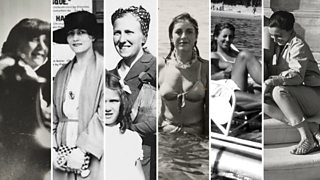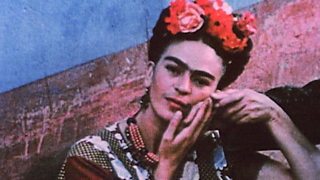From moonwalk to catwalk: André Courrèges and Space Age style
16 February 2016
Designing clothes in the golden age of Concorde, moon landings and the space race, André Courrèges, who died in January aged 92, blazed a unique trail in the world of fashion. Daring, avant-garde and achingly cool, his work left a rich legacy for future generations of fashion designers. Author DANA THOMAS recounts a life spent at the cutting age of popular culture.

French designer André Courrèges not only modernised fashion; he catapulted it into the future.
When Courrèges died on 7 January this year, the fashion world lost one of its true visionaries.
You don’t walk through life anymore. You run. You dance. You drive a car. Clothes must be able to move tooAndré Courrèges
Back in 1964, when the space race and the women’s movement were still their infancy, Courrèges unveiled his “Space Age” collection of A-line dresses, drop-waist miniskirts, peg-leg pants and flat soled go-go boots.
"You don’t walk through life anymore. You run. You dance. You drive a car,” he explained back then. “Clothes must be able to move too.”
The Moon Girl look, as it was known, was cheerful and clean, mostly in clinical white accented with vibrant fruit tones of lemon, lime, raspberry and tangerine.
The New York Times called it “the brightest blaze of the year” and British Vogue dubbed 1964 “the Year of Courrèges.”
His followers were legion: Jacqueline Kennedy, socialites the Duchess of Windsor and Gloria Guinness, French pop singers Françoise Hardy and Sylvie Vartan, and French actresses Catherine Deneuve and Brigitte Bardot - all were regular Courrèges customers. Style icon Audrey Hepburn sported it in the hit 1966 comedy film How To Steal a Million.
In 1965, Courrèges sold 200,000 miniskirts. And over the years, his stark silhouette has been referenced by such fashion leaders as Karl Lagerfeld, Marc Jacobs and Moschino.
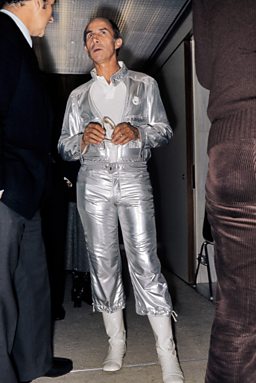

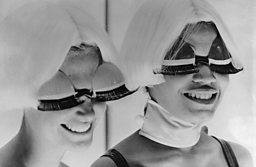


Courrèges’ beginnings were humble and as far off the fashion track as one can be. He was born in Pau, a small town tucked in the French Pyrenees, on 9 March 1923.
His father, a butler in a stately home, wanted him to study engineering; he agreed, and eventually landed a job as a manager in engineering research. “I was the unhappiest man on earth,” he later said.
He escaped by serving as a pilot during World War II. Upon his return to civilian life, Courrèges decided to change tracks and pursue fashion.
He joined the then-trailblazing house of Balenciaga as an entry-level gopher and during his ten years there, he worked his way up to first assistant to the master Cristobal.
In 1961, he left to start his own brand and melded what he learned from Balenciaga about shapes, architecture and structure with a wholly youthful and modernist approach that was also being embraced by his peers Pierre Cardin and Paco Rabanne.
“This man destroys women!” Coco Chanel scoffed. “He turns them into little girls!”
Yves Saint Laurent declared that the Space Age collection hit “like an earthquake.” But not everyone in the fashion establishment loved it — or him.
“This man destroys women!” Coco Chanel scoffed. “He turns them into little girls!” Of Courrèges' mod mini-skirts, she scoffed: “There is nothing uglier than a knee.”
Courrèges’ life and career boomed throughout the 1960s and 1970s. He opened a factory in Pau to produce his clothes, and in 1967 he married his assistant Coqueline Barrière, whom he’d met at Balenciaga, and they had a daughter named Marie; both survive him.
In 1968, he sold half his company to the beauty giant L’Oréal to help expand his company, and within four years he opened 125 boutiques worldwide and introduced his first perfume, Mr. Courrèges.
In 1972, he designed the staff uniforms for the ill-fated Munich Olympics, and a year later, he launched menswear. In 1978, they sold the brand to a Japanese license, Itokin; unfortunately, it was not an ideal union.
From the archive
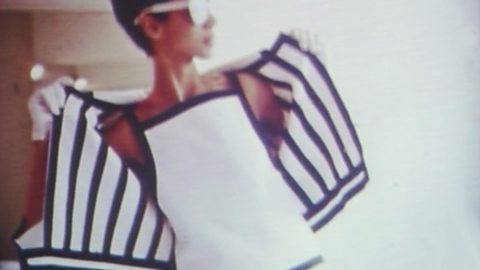
André Courrèges on his new ready-to-wear range of futuristic clothing, 1968
French fashion designer André Courrèges discusses his latest range of space age clothing.
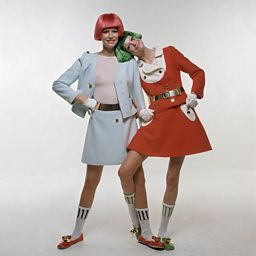
To make matters worse, in the early 1980s, avant-garde designers Rei Kawakubo of Comme des Garçons and Vivienne Westwood made an acute turn toward deconstruction, the antithesis of Courrèges’ hyper-strict line.
André Courrèges was a visionary designer who foresaw the 21st centuryJacques Bungert and Frédéric Torloting
And in 1986, Courrèges was dropped from the official couture list by the French fashion association—a brutal blow.
Finally, in 1994, André and Coqueline Courrèges regained control of the company. Sadly, André learned he had Parkinson’s disease and as his condition worsened, he was forced to retire and hand over creative duties to Coqueline.
Five years ago, French former ad men Jacques Bungert and Frédéric Torloting bought the brand with the idea of remaking it.
With two new designers, 25-year-old Arnaud Vaillant and 26-year-old Sébastien Meyer, at the helm, Courrèges returned to the Paris runways last autumn to critical praise.
André Courrèges was “a visionary designer who foresaw the 21st century and believed in progress,” Bungert and Torloting said in a statement after his death. “That is what makes Courrèges so modern today.”
Dana Thomas is the author of Gods and Kings: The Rise and Fall of Alexander McQueen and John Galliano, published by Penguin Press.
Style and fashion features
Related Links
More from BBC Arts
-
![]()
Picasso’s ex-factor
Who are the six women who shaped his life and work?
-
![]()
Quiz: Picasso or pixel?
Can you separate the AI fakes from genuine paintings by Pablo Picasso?
-
![]()
Frida: Fiery, fierce and passionate
The extraordinary life of Mexican artist Frida Kahlo, in her own words
-
![]()
Proms 2023: The best bits
From Yuja Wang to Northern Soul, handpicked stand-out moments from this year's Proms



